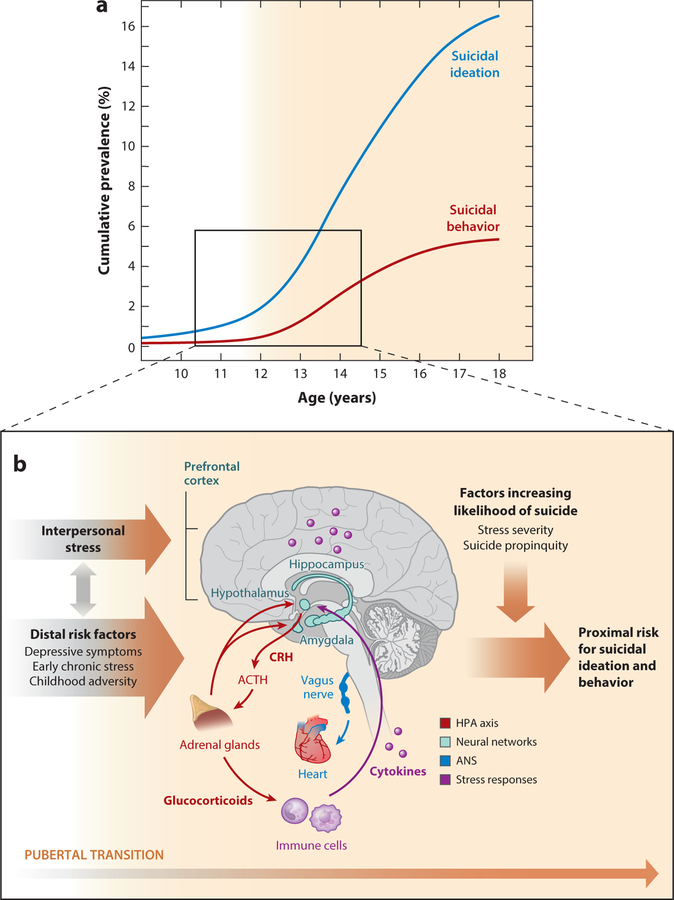Figure 1.
Heuristic model of adolescent suicidal ideation and behavior as a failure of biological responses to acute stress. (a) Developmental onset and prevalence of suicidal ideation and behavior (data from Nock et al. 2013). (b) Risks for suicidal ideation and behavior begin to increase exponentially at the pubertal transition. This increase occurs during a period of significant changes in biological systems that respond to acute stress. Our model suggests that interpersonal stressors and distal risk factors directly influence biological stress-response systems. In turn, failures of biological responses to acute stress confer risks for suicidal ideation and behavior, particularly among those facing stress exceeding their own personal threshold and those with prior exposure to suicidal ideation and behavior. Key stress-response systems that have been linked with suicidal ideation and behavior are depicted. Abbreviations: ACTH, adrenocorticotropic hormone; ANS, autonomic nervous system; CRH, corticotropin-releasing hormone; HPA, hypothalamic–pituitary–adrenal.

